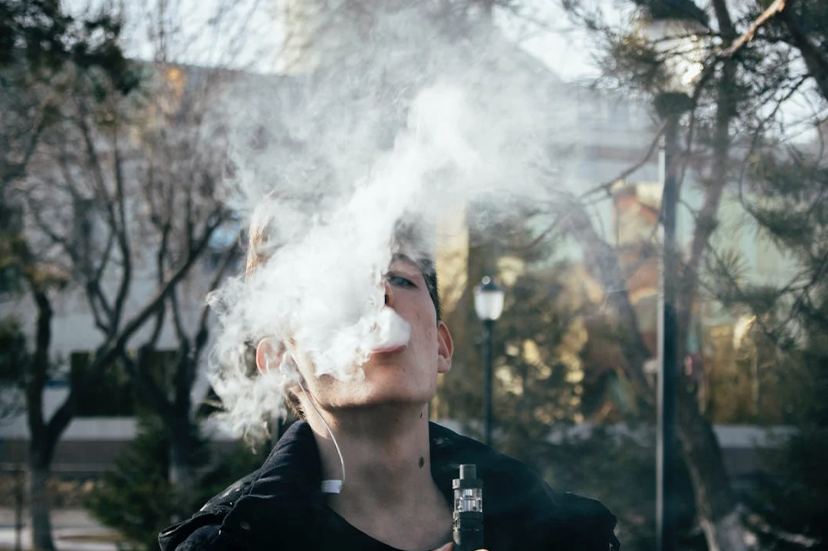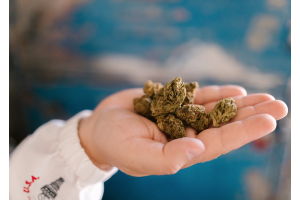Is Vaping Cannabis SAFE?

Smoking is undoubtedly the most popular way to consume cannabis. However, cannabis consumers have developed new methods to consume it over the years.
Edibles, tablets, gummies, tinctures, and topicals are just a few examples that cannabis businesses have created to diversify the offer in the cannabis market.
Besides, even the method of smoking cannabis has experienced an upgrade recently.
For instance, vaping liquids containing THC and vaporizing cannabis dried flowers and leaves have become popular alternatives to the traditional way to consume cannabis.
Vaping cannabis involves inhaling heated oil containing THC through vape pens. However, vaping can also refer to using a vaporizer, which, unlike vape pens, consists of the use of dried flowers.
While smoking involves combustion, defined as the process of burning cannabis, vaporization is a more complex process that includes a phase transition from liquid to vapor.
Instead, dry herb vaporizers work by gently heating the dried flowers in the device tank to a temperature where the moisture and oils in the plant make vapor, but not so hot that it combusts.
This latter method of consuming cannabis is widely used by medical cannabis patients as vaping cannabis increases the level of cannabinoids that are activated, which could enhance some of the health benefits of treating their condition.
Inhaling any combusted cannabis products is considered a health risk for medical cannabis patients, and vaporization produces fewer carcinogenic compounds than combustion. Furthermore, it may even help eliminate toxic and potentially carcinogenic compounds created due to combustion.
Unlike you think, vaped cannabis-dried flowers still contain cannabinoids and terpenes. Therefore, leftover flowers, commonly known as Already Vaped Bud (AVB), can be used twice.
By assessing the quality of AVB, it is crucial to consider that if you vape at a lower temperature, there are likely to be more residual cannabinoids in AVB than if you vape at a higher temperature.
Furthermore, another variable to take into consideration is how long you vape. If your vaping session is short, AVB is likely higher in cannabinoids than AVB from long vape sessions.
Finally, if buds originally contained a high level of THC, the AVB you get from the THC strain would probably be higher than AVB obtained by buds with a low THC level.
AVB can be used in different ways. One of the most common uses of AVB is in edibles. Baking or cooking with your AVB can be one of the best choices because it helps to mask the bitter flavor of the AVB while also using don't waste leftover cannabinoids. Furthermore, you can use AVB by making capsules, infused beverages, tinctures, or even using it in tea or coffee.
One of the main reasons people are attracted to these non-traditional ways of consuming is that cannabis smoking can create respiratory problems.
Vaping cannabis liquids or dried buds may avoid the smoke and toxins associated with combustion and create fewer respiratory symptoms than smoked cannabis.
However, vaping is not immune to health risks.
E-cigarettes and vaping products were initially designed to substitute tobacco cigarettes. But with the rise of the cannabis industry, these devices have been incorporated into the cannabis market.
Some experts suggest that vaping may be as harmful as cigarette smoking. Others consider vaping a healthier alternative to cigarette smoking and may help in smoking cessation. However, the safety and long-term health effects of e-cigarettes or other vaping products are still not well known.
Between 2019 and 2020, consumers that bought illegal, unregulated cannabis vaping products in the United States experienced a vaping, product use-associated lung injury (EVALI) outbreak.
U.S Centers for Disease Control (CDC) confirmed 2,711 hospitalized cases, including 60 deaths due to the outbreak[1].
The CDC identified Vitamin E acetate as strongly linked to the EVALI outbreak.
Vitamine E acetate is not necessarily harmful when ingested as a supplement or applied to the skin via a cream. However, studies have shown it can cause harm when inhaled.
These kinds of products are widespread among young people. A recent study published in JAMA Pediatrics Journal showed that cannabis vaping use has doubled among teenagers in the last seven years[2].
Researchers from The University of Queensland (Australia) have reviewed seventeen studies analyzing data of almost 200,000 US and Canadian teenagers finding out that cannabis vaping among teenagers doubled for lifetime use from 2013 to 2020.
Researchers explained that cannabis vaping products could have become popular among teenagers due to the accessibility of vaping devices, enjoyable flavors, and promotion of their use on social media platforms.
However, there is a lack of evidence when comparing the long-term effects of smoked cannabis versus vaporized cannabis on lung health.
Although cannabis vaping seems less harmful than smoking, it produces more potent effects than smoking cannabis for infrequent users.
According to researchers from Johns Hopkins University[3], vaping cannabis delivers more significant amounts of THC, the primary cannabis compound with psychoactive effects.
Some vaping devices, such as dry herb vaporizers, can be used with relatively unprocessed cannabis flowers and leave.
Other devices, such as vape pens for cannabis liquids, use highly processed products whose safety and chemical profile are not regulated.
Non-regulated substances are wildly used in flavored cannabis vaping products as they may contain several harmful substances.
Finally, the illegality of cannabis in most countries worldwide, the resulting lack of regulation, and the little research on the side effects of consuming cannabis with these new devices used for cannabis products can put consumers' health at risk.
[1] https://www.cdc.gov/tobacco/basic_information/e-cigarettes/severe-lung-disease.html
[2] https://jamanetwork.com/journals/jamapediatrics/article-abstract/2785376#:~:text=Findings%20This%20systematic%20review%20and,%25)%2C%20and%20the%2030%2Dday
[3] https://jamanetwork.com/journals/jamanetworkopen/fullarticle/2716990
Written and Published by Dario Sabaghi in Weed World Magazine Issue 158
Featured Image: Pexels












Validate your login